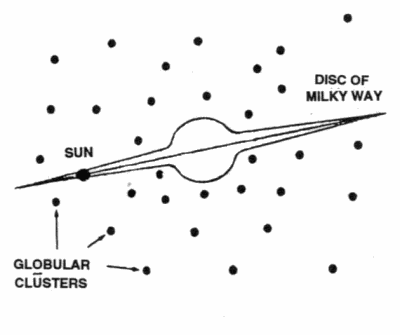 |
Science Frontiers ONLINE No. 134: MAR-APR 2001 |
|
|
Missing Planets In Globular Clusters
In fact, though, you would have to observe this blazing sky from a spaceship, because diligent searches have not detected any planets in any of the many globular clusters. In 1999, a team of 24 astronomers used the Hubble Space Telescope to search for planets in the cluster named 47 Tucanae. Their method was to look for dark planets crossing the bright disks of the cluster's stars. After patiently watching 34,000 stars, they came up empty-handed. For some unknown reason, planets never formed around the stars in 47 Tucanae -- or in any other globular clusters checked so far. Are globular clusters in general different from the rest of the Milky Way? Possibly, see below.
(Anonymous; "No Globular Planets?" Astronomy, 28:34, October 2000. Anonymous; "Planets Come Up Missing in a Globular Cluster," Sky & Telescope, 104:23, October 2000.)
Answer. Globular clusters are peculiar in several additional ways. For example, the globular clusters in the Milky Way have a spherical distribution rather than being compressed into a flat spiral with the rest of our galaxy's stars. There is even evidence that the clusters may not participate in the Milky Way's ponderous rotation. See AOB4 in Stars, Galaxies, Cosmos for still more globular-cluster idiosyncracies.
 A spherical cloud of globular clusters coexists in space with the disc-shaped Milky Way. Each globular cluster is a dense spherical aggregation of tens of thousands of stars.
A spherical cloud of globular clusters coexists in space with the disc-shaped Milky Way. Each globular cluster is a dense spherical aggregation of tens of thousands of stars.
|
Other Sites of Interest
|